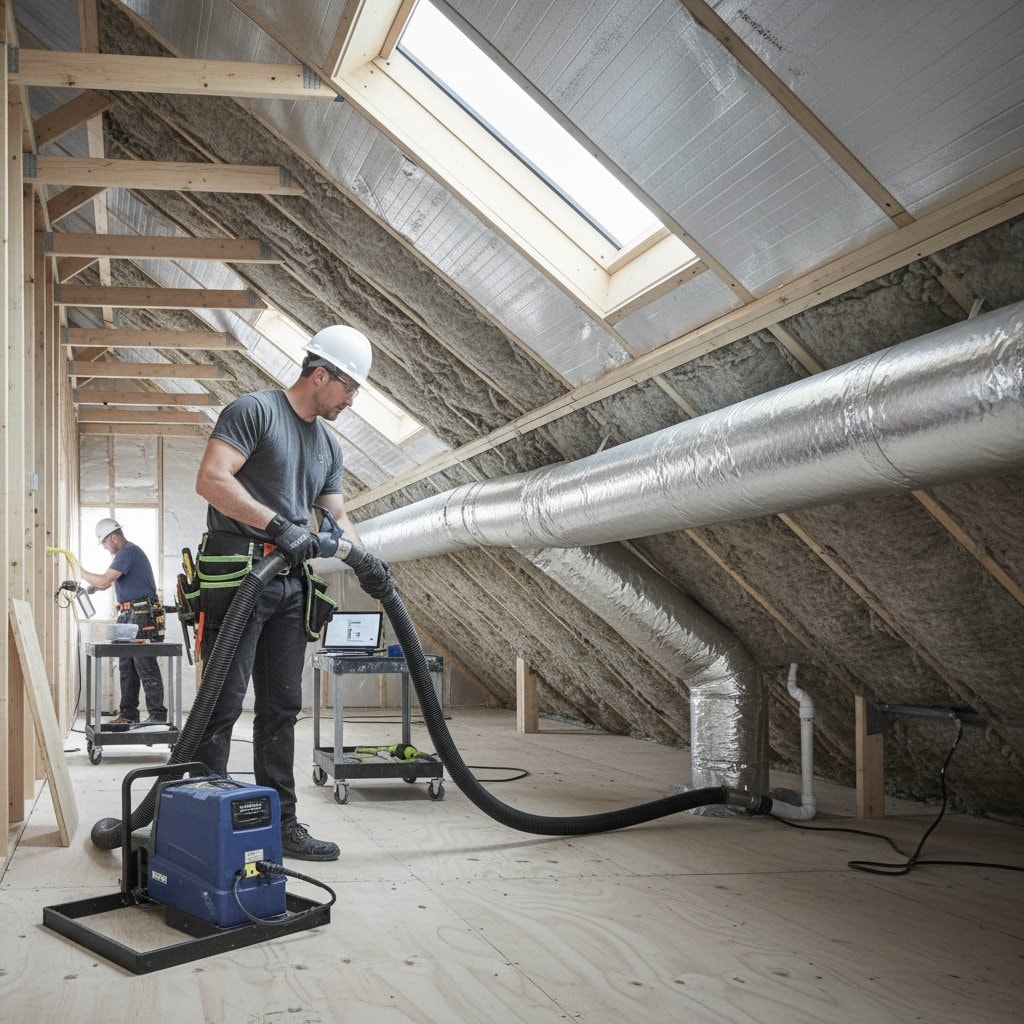Key Points
- Attic retrofits deliver some of the strongest returns among energy efficiency investments.
- Proper insulation combined with air sealing can lower heating and cooling costs by up to 50 percent.
- Material selections, ventilation strategies, and moisture management directly affect performance and comfort levels.
- Even basic upgrades improve property value while ensuring long-term energy savings.
The Untapped Potential Overhead
Picture a home where living spaces stay comfortable year-round, but winter drafts creep in or summer air conditioning runs nonstop. The attic often causes these issues. As the primary pathway for heat loss, an underinsulated attic lets warmth escape in cold weather and traps heat in warm months, driving up utility bills.
Many homeowners focus on obvious upgrades like new windows or thermostats. Yet the attic provides one of the most cost-effective ways to improve efficiency, reduce emissions, and boost resale appeal. A well-planned retrofit turns this overlooked space into a key asset for overall home performance.
Importance of Attic Retrofits
With energy costs on the rise and buyers prioritizing efficient homes, attic upgrades stand out as essential. These improvements can yield a full return on investment within a few years through reduced energy use and better comfort. Simple changes, such as sealing leaks or adding insulation, deliver quick, noticeable results.
Benefits go beyond lower bills. Strong insulation maintains steady indoor temperatures and prevents moisture that leads to mold. In summer, a cooler attic eases the burden on cooling systems, extending their lifespan and cutting repair needs.
Essential Planning Factors
Start by assessing current conditions before any work begins. In older homes, insulation may have settled or degraded, reducing its effectiveness. Focus on these core areas during evaluation:
-
Insulation Type and Thickness
Common choices include fiberglass batts, blown-in cellulose, or spray foam, each with unique benefits. Hire a professional for an energy audit to measure the existing R-value, which indicates thermal resistance. Aim for R-38 to R-60 based on your local climate to maximize heat retention. -
Air Sealing Techniques
Leaks around vents, pipes, and light fixtures undermine even the best insulation. Use caulk to fill small cracks and expanding foam for larger gaps before adding new insulation. This step blocks unwanted air movement and boosts overall efficiency. -
Ventilation and Moisture Control
Good airflow prevents condensation that damages insulation and wood structures. Add ridge vents along the roof peak and soffit vents at the eaves to promote steady air exchange and stable humidity. -
Access and Safety Measures
If the attic houses HVAC equipment or storage, install reinforced walkways and bright lighting. These additions allow safe inspections and maintenance without risking injury.
Investment Costs and Return Projections
Attic retrofit costs vary by home size, material type, and labor needs, typically ranging from a few hundred to several thousand dollars. Consider these breakdowns for common options:
- Fiberglass Batts or Blown-In Fill: This affordable method costs about 1 to 2 dollars per square foot installed, offering solid coverage for most homes.
- Cellulose Insulation: At 2 to 3 dollars per square foot, this recycled-paper product provides dense fill with minimal settling and strong eco-credentials.
- Spray Foam Insulation: The premium choice at 3 to 6 dollars per square foot seals gaps while insulating, though it requires skilled application.
Higher upfront costs for spray foam often pay off fastest, with many owners recovering 50 to 100 percent of expenses in three to five years from energy savings. Improved efficiency also enhances home appeal to buyers who value lower operating costs and green features.
Innovative Design Approaches
Attics serve more than basic insulation needs; smart designs expand their utility without sacrificing performance. Integrate these methods to make the space more versatile.
- Conditioned Attic Configurations: Insulate the roof deck rather than the floor to bring HVAC systems into the conditioned area, reducing extreme temperature swings.
- Radiant Barrier Applications: Apply reflective foil under roof rafters to bounce back solar heat, potentially lowering cooling demands by up to 17 percent in warm regions.
- Integrated Storage Options: Build raised platforms over insulation to create safe storage areas that avoid compressing the material below.
These techniques make the attic a multifunctional zone, combining storage, mechanics, and efficiency in one cohesive setup.
Environmental and Efficiency Benefits
Attic retrofits support sustainability by lowering household carbon output. Every bit of saved energy means less dependence on fossil fuels for heating and cooling. Modern materials often use recycled sources like denim or plant fibers, reducing manufacturing impacts while providing excellent insulation.
Upgrades also build home resilience. They keep interiors stable during power outages, manage humidity to limit allergens, and protect the roof from heat-related wear. In the end, these changes promote comfort, save money, and contribute to environmental health.
Common Inquiries
How do I determine if attic insulation requires replacement?
Look for uneven room temperatures, spiking utility bills, or thin layers over floor joists. Perform a visual check or bring in an energy auditor for an accurate diagnosis.
Is a do-it-yourself attic retrofit feasible?
Simple jobs like caulking gaps or laying batts work well for handy homeowners with safety equipment. For spray foam or large blown-in projects, professionals ensure even application and proper ventilation.
Are incentives available for attic retrofits?
Many utility companies and government programs offer rebates for audits, insulation, and sealing. Check with local energy offices to offset 20 to 50 percent of costs.
What is the expected lifespan of an attic retrofit?
Fiberglass or cellulose lasts 30 to 50 years when kept dry and undisturbed. Spray foam often endures as long as the home structure, typically over 50 years.
Steps to Achieve Lasting Efficiency
Begin with an energy audit to identify specific needs. Choose materials suited to your climate and budget, then hire certified installers for flawless results. Track utility bills after completion to verify savings and comfort improvements. This approach cuts costs while creating a more durable and pleasant home for the long term.










